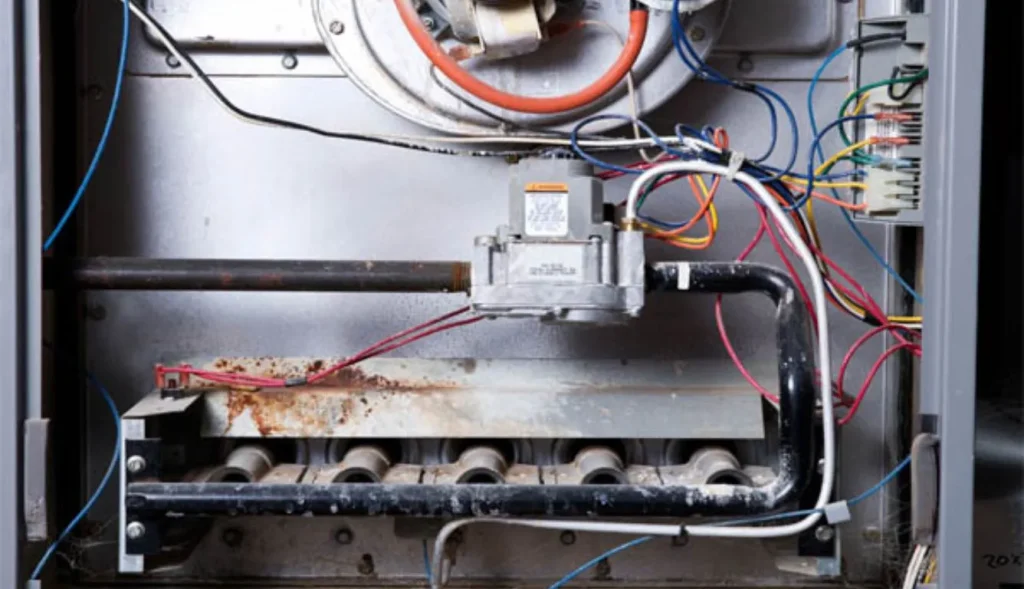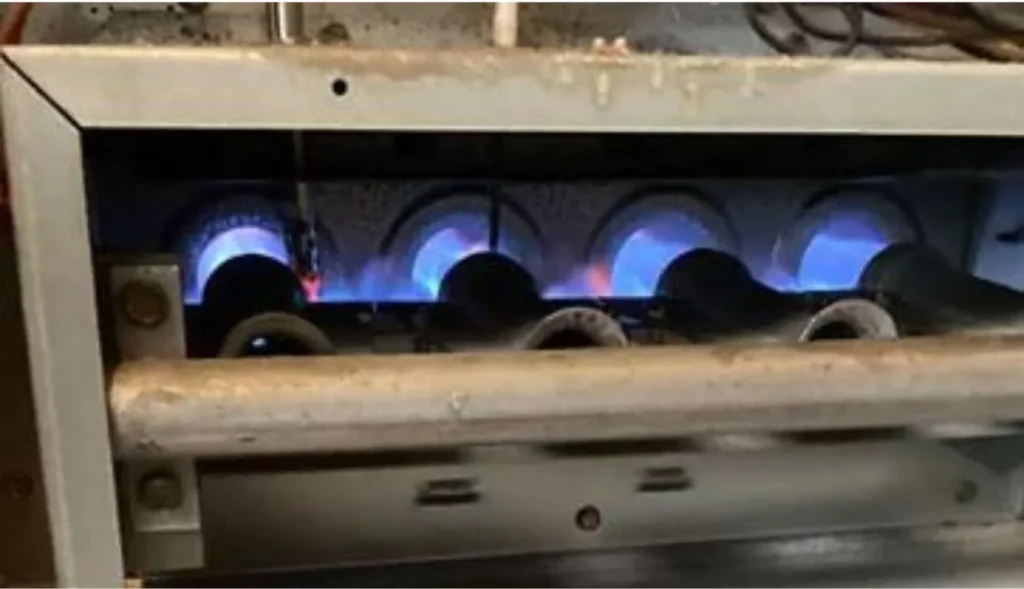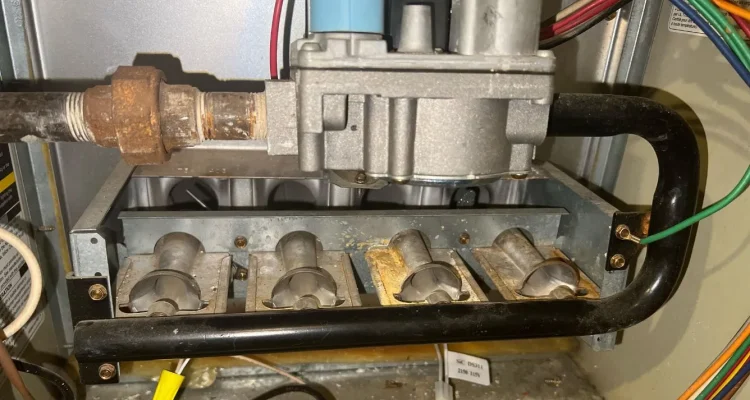Introduction
Having furnace trouble can be frustrating, especially when it’s cold outside. One common issue homeowners face is a bad furnace ignitor. This small but essential component is what allows your furnace to light and keep your home warm. But how can you tell if the furnace ignitor is bad? In this guide, we’ll walk through everything you need to know, from symptoms to replacement, so you can keep your home comfortable.

What is a Furnace Ignitor?
Overview of Furnace Ignitor Function
A furnace ignitor is a device responsible for igniting the gas in your furnace to generate heat. Think of it as the spark that gets the heating process going. Without a functioning ignitor, your furnace won’t be able to produce heat.
Different Types of Ignitors
There are two main types of furnace ignitors:
- Hot Surface Ignitor (HSI): This ignitor uses an electric current to heat up and ignite the gas.
- Intermittent Pilot Ignitor: This type uses a small flame to ignite the main burners when the thermostat signals the need for heat.
Each has its own advantages and lifespan, but both are essential to your furnace’s operation.
Signs of a Bad Furnace Ignitor
Common Symptoms of a Bad Ignitor
When your furnace ignitor is failing, you’ll often notice these symptoms:
- No heat: The furnace runs but doesn’t produce any heat.
- Short cycling: Your furnace turns on and off too quickly.
- Clicking sounds: You’ll hear repeated clicking but no ignition.
- Furnace won’t start: The system may refuse to start at all.
The Importance of Recognizing Early Warning Signs
Recognizing these symptoms early can save you time, money, and the discomfort of a cold home. Ignoring the signs can lead to more severe issues and even permanent furnace damage.
How Does a Furnace Ignitor Work?
Steps in the Ignition Process
Here’s a quick breakdown of how the furnace ignitor works:
- Thermostat signals the furnace that it’s time to heat.
- Ignitor gets activated, heating up to ignite the gas.
- The burners ignite, allowing heat to build up in the furnace.
- Blower turns on, pushing heated air through your home’s ductwork.
How Ignitors Impact Furnace Performance
Without a properly functioning ignitor, the entire heating process stalls, leaving your home cold. A bad ignitor can also cause other components of your furnace to wear down faster due to increased strain.
Common Causes of Furnace Ignitor Failure
Why Do Furnace Ignitors Go Bad?
Furnace ignitors can fail for a variety of reasons, including:
- Age: Over time, even the best ignitors wear out.
- Dirt or grime: A buildup of dirt can prevent the ignitor from functioning properly.
- Electrical issues: Voltage fluctuations or shorts can fry the ignitor.
Mechanical Issues vs. Wear and Tear
Sometimes ignitors fail due to mechanical issues, like a damaged furnace part affecting the ignitor’s function. More often, though, it’s simply a matter of the ignitor reaching the end of its lifespan.
How to Test a Furnace Ignitor
Step-by-Step Testing Instructions
Testing your furnace ignitor is straightforward:
- Turn off the power to the furnace.
- Remove the furnace cover to access the ignitor.
- Use a multimeter to check for continuity. No continuity usually means the ignitor is bad.
Tools You’ll Need for Testing
You’ll need a few basic tools:
- Screwdriver
- Multimeter
- Safety gloves
What Happens if You Ignore a Bad Furnace Ignitor?
Risks of Ignoring a Faulty Ignitor
Ignoring a bad furnace ignitor can lead to more serious problems, such as:
- Overworking the blower motor, leading to failure.
- Decreased efficiency, driving up your energy bills.
- Complete furnace breakdown, requiring expensive repairs or replacement.
Long-Term Damage to Your Furnace
A bad ignitor can cause other furnace parts to overwork, leading to costly damage that could have been prevented with early detection.
DIY Furnace Ignitor Replacement
How to Safely Replace a Furnace Ignitor
If you’re comfortable with DIY projects, replacing the furnace ignitor is fairly simple:
- Turn off the power to your furnace.
- Remove the old ignitor.
- Install the new ignitor and reassemble the furnace.
Safety Precautions to Follow
Always follow these safety steps:
- Wear gloves to protect your hands.
- Turn off the furnace to avoid electrical shocks.
- Handle the ignitor with care—it’s delicate!
When to Call a Professional
Knowing When It’s Time to Seek Help
If you’re uncomfortable with DIY repairs or unsure about the problem, it’s always best to call a professional. They can accurately diagnose the issue and make the necessary repairs.
Why Professional Assistance Matters
A professional technician can ensure the job is done correctly, reducing the risk of future issues and keeping your furnace in peak condition.
Preventing Furnace Ignitor Problems
Maintenance Tips for a Longer-Lasting Ignitor
To extend the life of your furnace ignitor, you can:
- Clean the ignitor regularly.
- Schedule yearly maintenance checks.
- Monitor for early signs of wear.
How to Keep Your Furnace Running Smoothly
In addition to caring for your ignitor, keep your furnace clean, change the filters, and ensure the system is in good working order to prevent future problems.
How Long Do Furnace Ignitors Last?
Typical Lifespan of a Furnace Ignitor
On average, a furnace ignitor lasts between 3 to 5 years. However, proper care can extend this lifespan.
Factors That Impact Longevity
Environmental factors, such as dust and humidity, can shorten the life of your ignitor. Regular maintenance helps counter these effects.
Costs of Replacing a Furnace Ignitor
How Much Does It Cost to Replace an Ignitor?
The cost to replace a furnace ignitor ranges from $150 to $300, depending on the furnace type and labor fees.
Comparing DIY Costs vs. Professional Services
DIY replacement can save you money, but a professional ensures the job is done right, which could save on future repairs.
FAQs
- How often should I replace my furnace ignitor?
Every 3 to 5 years, depending on usage and maintenance. - Can I clean my furnace ignitor?
Yes, regular cleaning can help extend its life. - What happens if I don’t replace a bad ignitor?
Your furnace may stop working entirely, or other parts could fail. - How much does it cost to replace an ignitor?
Typically between $150 and $300, depending on whether you DIY or hire a professional. - Why is my furnace clicking but not turning on?
This is often a sign of a bad ignitor, preventing the furnace from igniting the gas.

Conclusion
A bad furnace ignitor is a common issue, but it doesn’t have to be a stressful one. Recognizing the signs early and understanding how the ignitor works can help you avoid bigger problems down the line. Whether you choose to DIY or call in a pro, make sure you address the problem before it affects your furnace’s performance.


Congratulation!